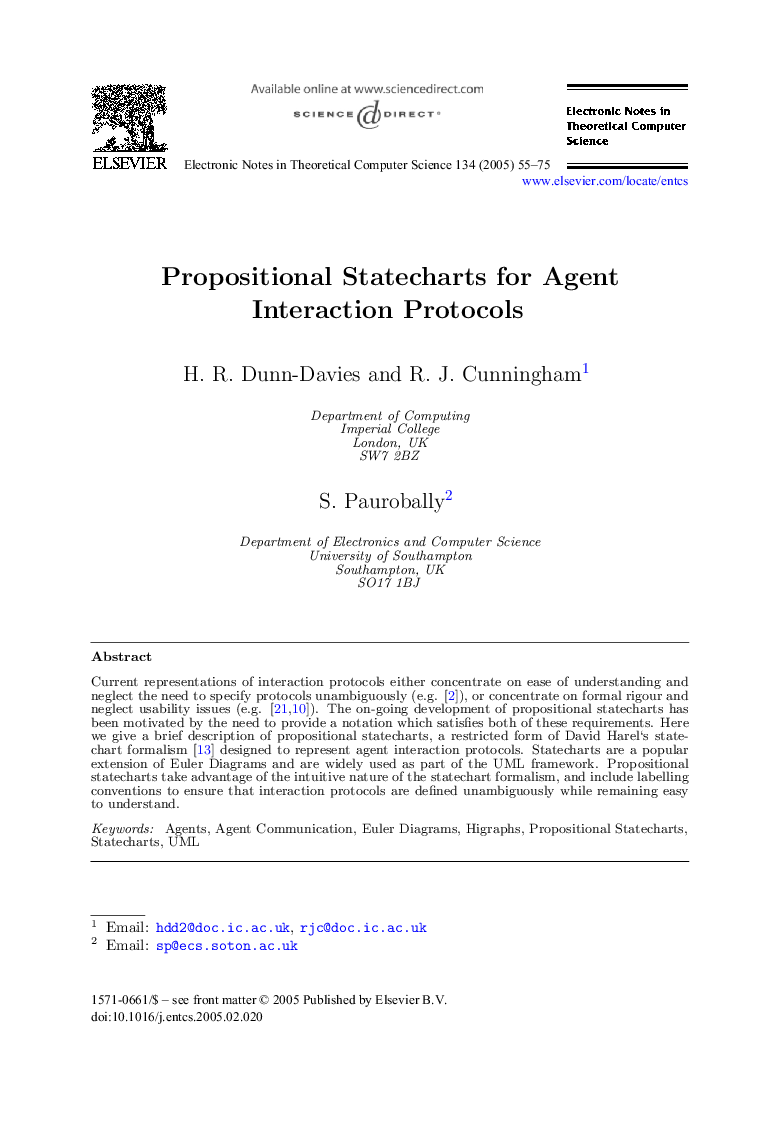| Article ID | Journal | Published Year | Pages | File Type |
|---|---|---|---|---|
| 9655884 | Electronic Notes in Theoretical Computer Science | 2005 | 21 Pages |
Abstract
Current representations of interaction protocols either concentrate on ease of understanding and neglect the need to specify protocols unambiguously (e.g. [B. Bauer, J.P. Muller, J.Odell, Agent UML: A Formalism for Specifying Multiagent Software Systems, AOSE (2000) 91-104]), or concentrate on formal rigour and neglect usability issues (e.g. [S. Paurobally, Rational Agents and the Processes and States of Negotiation, Ph.D. thesis, Imperial College, London, 2002, N. Fornara, M. Colombetti, Defining Interaction Protocols using a Commitment Based Agent Communication Language, Proceedings of the Second International Joint Conference on Autonomous Agents and Multiagent Systems (2003)]). The on-going development of propositional statecharts has been motivated by the need to provide a notation which satisfies both of these requirements. Here we give a brief description of propositional statecharts, a restricted form of David Harel's state-chart formalism [D. Harel, Statecharts: A visual formalism for complex systems, Sci. Comput. Programming 8 (1987) 231-274] designed to represent agent interaction protocols. Statecharts are a popular extension of Euler Diagrams and are widely used as part of the UML framework. Propositional statecharts take advantage of the intuitive nature of the statechart formalism, and include labelling conventions to ensure that interaction protocols are defined unambiguously while remaining easy to understand.
Related Topics
Physical Sciences and Engineering
Computer Science
Computational Theory and Mathematics
Authors
H.R. Dunn-Davies, R.J. Cunningham, S. Paurobally,
